Detection
Storm top divergence refers to a diverging wind field in the vicinity of the storm top. To determine if you are seing a Storm Top Divergence signature, follow the techniques illustrated in the sections below.
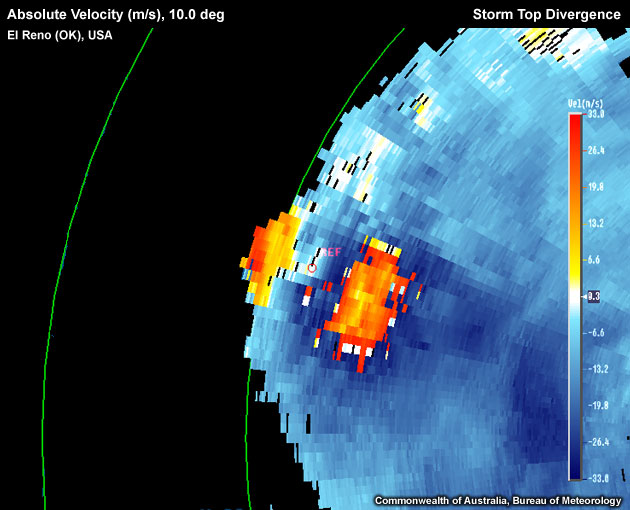
Aliased Storm Top Divergence signature located approximately at the storm core top.
Reflectivity: PPI/Plan View
Determining updraft location:
- Step up in elevation scans until you run out of >50 dBZ echoes.
- Step down one elevation scan.
- Set a reference point in the vicinity of the 50 dBZ echo. Note: if the background flow is strong, the divergence signature may be upwind of the storm top.
- Switch to the velocity field.
Velocity: PPI/Plan View
- Start with stepping up or down by one elevation scan.
- Is there an area of outbound radial velocities downrange and inbound radial velocities uprange from the reference point? If yes, a Storm Top Divergence signature is present.
Note: depending upon the background flow, the inbound and outbound echoes may not be displayed as a symmetric inbound–outbound velocity pair, as the jet–level divergence signature may translate rapidly. Also, especially for storms close to the radar, a steeply tilted radar beam might only sample the inbound or outbound branch of the divergent flow at storm top level. Moreover, aliasing is common in this signature due to the high flow velocities (often 50–100 knots) at this altitude. See the examples section for a demonstration of this.
Potential Difficulties in Detection
- Radar Sampling:
- Unreliable velocity data – "hot pixels".
- Resolution degradation as range increases – Radar sampling degrades as averaging becomes more enhanced due to wider beam widths.
- Aliased data – Typically, velocity data is aliased in this signature purely due to the large velocity values observed as a result of divergence and/or the background flow at the altitude.
- In particular for storms close to the radar, the tilted radar beam might only sample one of the two branches of the divergence signature, especially if the divergent layer at storm top level is shallow or the signature is located close to the radar.
- The thunderstorm is too close to the radar – Storm top is not visible as the beam is too low.
- Asymmetric divergence – Due to rapidly translating storms.
- Individual cell divergence masked in multicells affect the velocity distribution at storm top level.
Use the radio buttons or click the image to switch between reflectivity and velocity imagery:
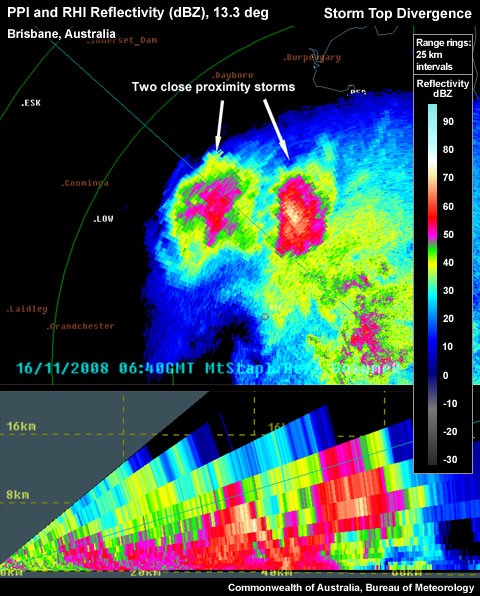
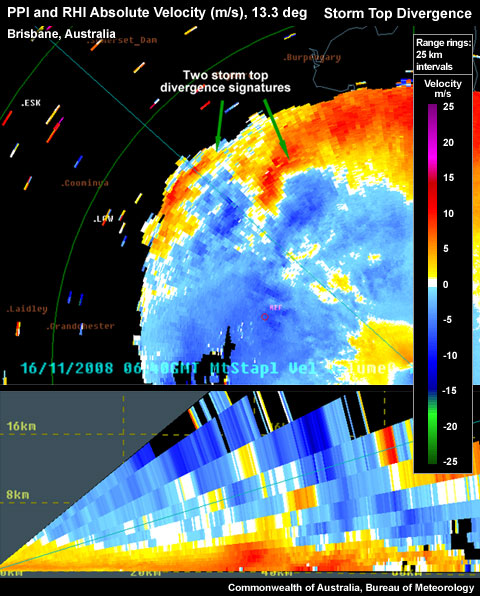
Two storms in close proximity to each other, both with storm top divergence that is getting more difficult to detect due to both signatures interacting with each other.
- Lack of targets – Due to the very dry air, few ice particles are present.
Examples of Storm Top Divergence
Use the radio buttons or click the image to switch between reflectivity and velocity imagery:
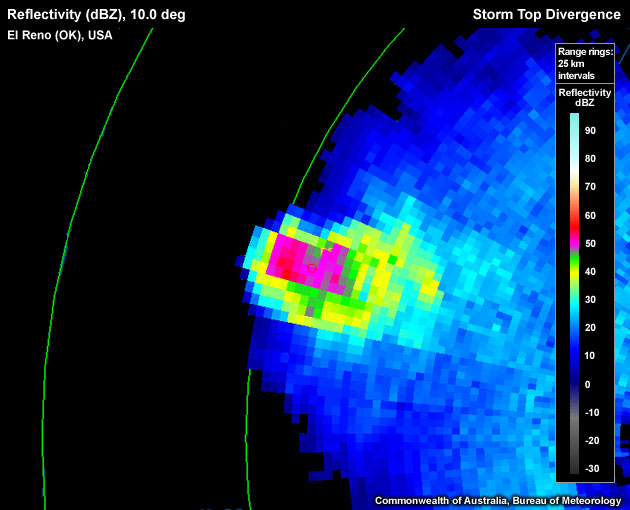

Aliased Storm Top Divergence signature located approximately at the storm core top.
Use the radio buttons or click the image to switch between reflectivity and velocity imagery:
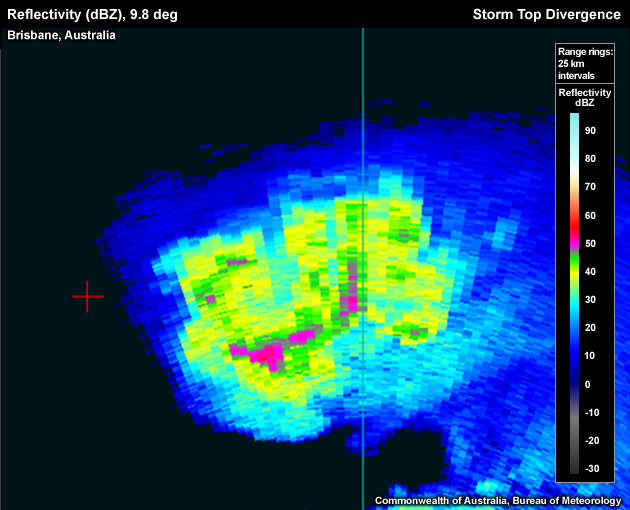
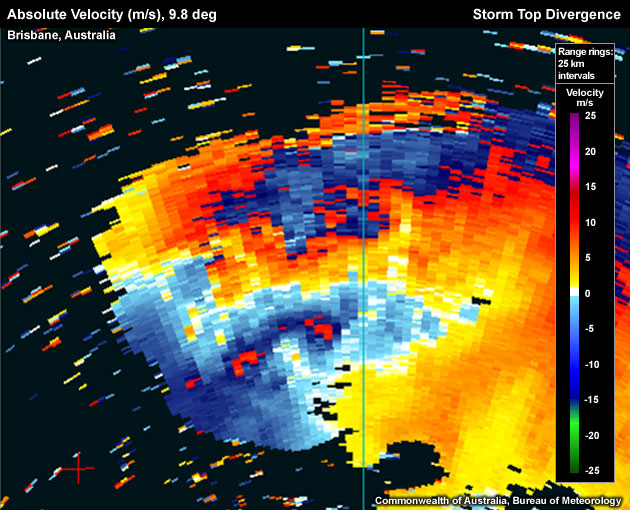
Aliased Storm Top Divergence signature located approximately at the storm core top.
Use the radio buttons or click the image to switch between reflectivity and velocity imagery:
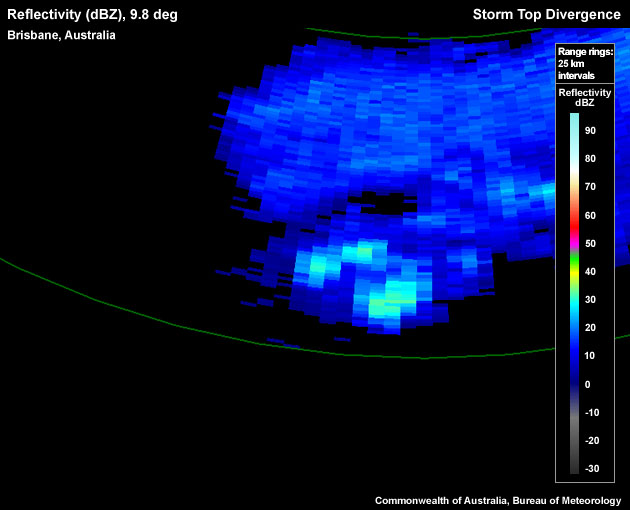
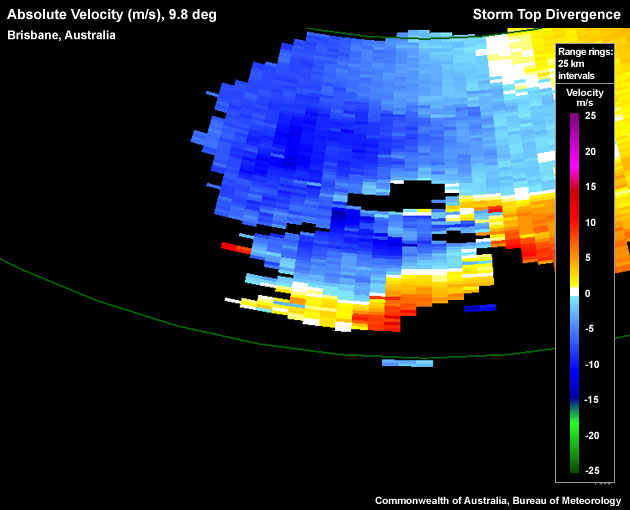
Storm Top Divergence signature located at approximately storm core top. Note the outbound branch of the divergence signature is small due to the signature only just being captured by the radar beam.
Use the radio buttons or click the image to switch between reflectivity and velocity imagery:
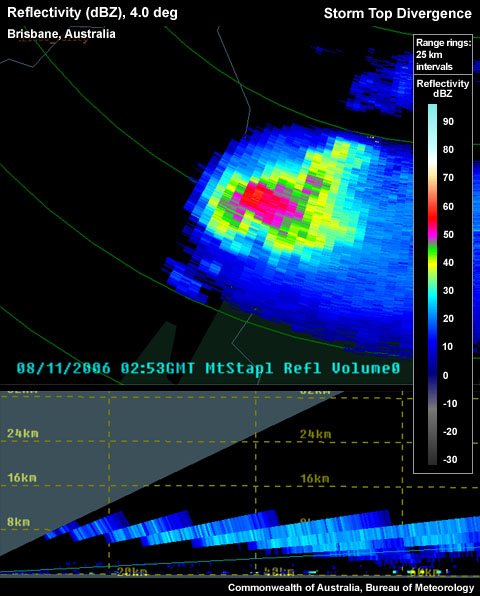
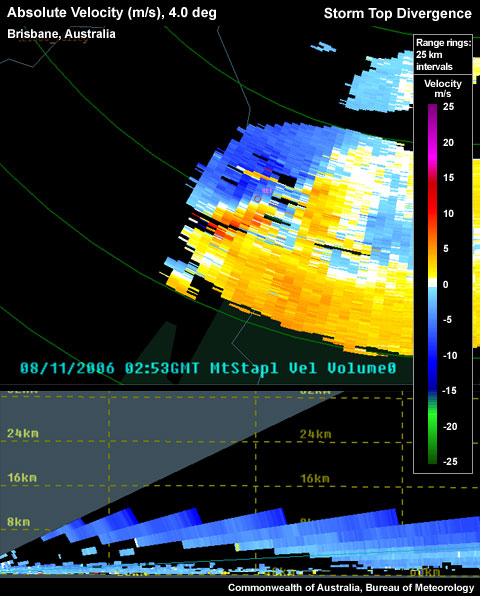
Aliased Storm Top Divergence signature located approximately at the storm core top.
Storm Top Divergence Look–a–likes
- Convergence – This signature appears very similar to divergence, with the inbound and outbound wind fields exchanging positions along the radar beam.
- Aliased data – With strong wind velocities aloft, data is often aliased. If this is not recognised, it is possible to see an area of inbound and outbound velocities that are seemingly diverging. Note: To avoid this mistake, make sure there is a white (or zero radial velocity) isodop separating the two wind fields. Usually aliasing will jump from maximum inbound to maximum outbound radial velocities.
Use the radio buttons or click the image to switch between reflectivity and velocity imagery:
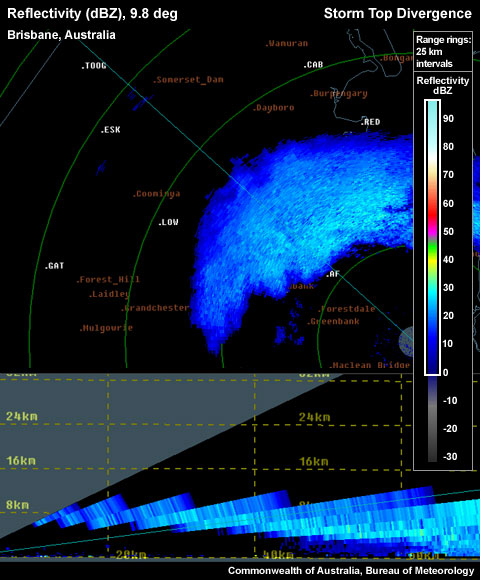
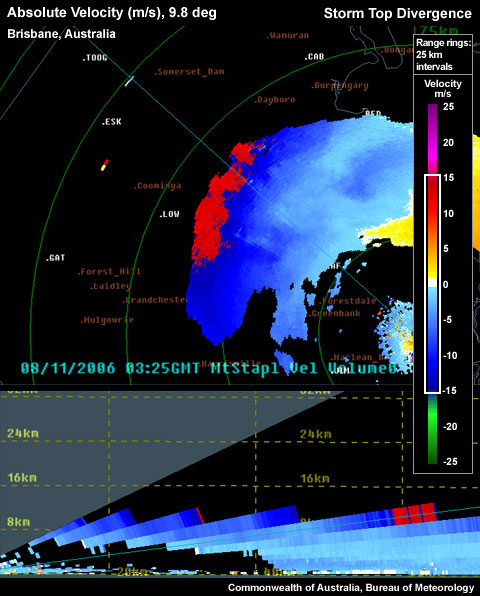
Strong inbound flow, aliased, which looks like a Storm Top Divergence signature in the absolute velocity. Corresponding reflectivity fields show no storm top.
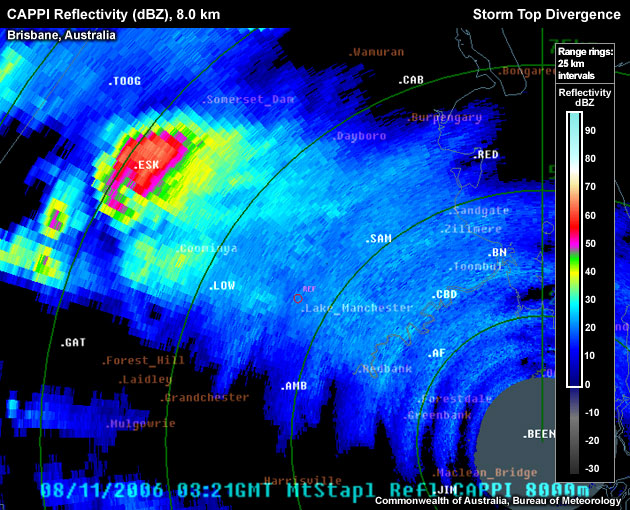
Corresponding CAPPI fields shows a storm top located ~50 km away from the false divergence signature evident in the previous imagery.
- Divergence signature not in the vicinity of the storm top – As the divergence signature is representing the outflow from the strong updraft, it is necessary that the signature is in the vicinity of the updraft/storm top.
